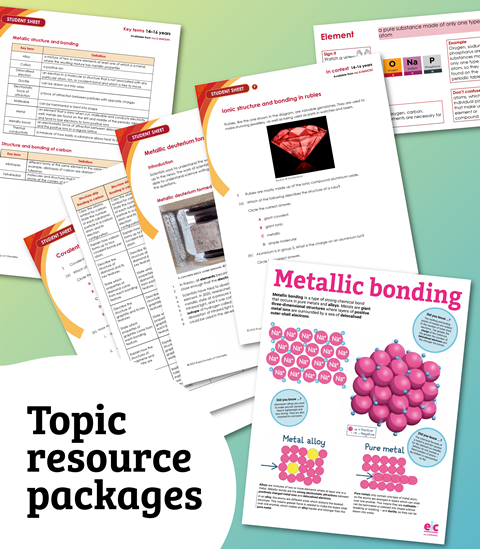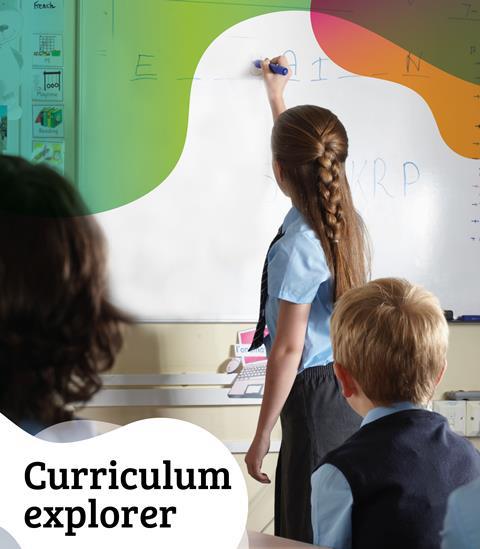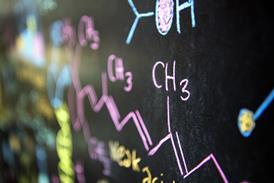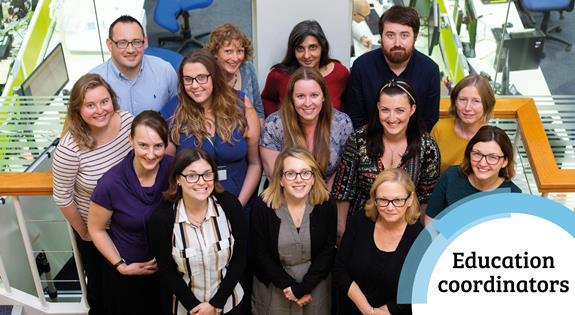All Problem solving articles – Page 8
-
 Resource
ResourceChemical and physical properties of pheromones
Help learner’s to understand what pheromones are, and how they are used by animals such as moths.
-
 Resource
ResourceThe thickness of titanium atoms in paint
Discover the thickness of a film of paint, estimating how thick it is by titanium atoms/ions.
-
 Resource
ResourceThe best catalyst to decompose hydrogen peroxide
Develop learner’s ideas of catalysis with this open-ended problem using hydrogen peroxide.
-
 Resource
ResourceIdentifying three unknown white solids
Devise experiments to label three white solids correctly by using chemicals and apparatus in the laboratory.
-
 Resource
ResourceHelping an industrial chemist
Devise a method for making a copper catalyst dispersed on an aluminium oxide support.
-
 Resource
ResourceWhat compound? Identify and analyse
Learners can devise their own testing system to identify the nature of a mystery compound.
-
 Resource
ResourceAmino acids and hair growth
Discover how quickly human hair grows, and develop learner’s understanding of amino acids too.
-
 Resource
ResourceH⁺ ions in water
Allow learners the chance to develop their own testing methods to identify H+ ions in samples of water.
-

-
 Resource
ResourceFinding the right ionic compound
Devise a procedure to identify four solids and then use this to carry out the identification.
-
 Resource
ResourceFind the pattern - metals
Consider data on the specific heat capacities for some metals and solve three problems related to those data.
-
 Resource
ResourceFind the pattern - alcohols
Consider data on the densities of six primary alcohols and solve four problems based on those data.
-
 Resource
ResourceCatalase enzyme reactions
Using four distinct questions, with open-ended methods, to explore catalysts and enzymes.
-
 Resource
ResourceQuantiCorp R&D: new products
This C/PBL resource involves an investigation into catalysis and conducting polymers for the production of biosensors. Students are challenged to develop a biosensor based on a conducting polymer in the context of an R&D department in a high-tech company.
-
 Resource
ResourceHwuche-Hwuche bark
Communication skills are an essential part of all university degree courses. In general, communication skills are developed throughout undergraduate courses via a range of activities and many departments already have substantial parts of their course aimed at transferable skills. The book ‘Communicating Chemistry’ contains a number of exercises that can ...
-
 Resource
ResourceCommercial Skills: Finance
This module asks teams of students to assess the financial impacts of two projects with a chemical background.
-
 Resource
ResourceCommercial Skills: Feasibility
In this module students are asked to summarise and critique two out of the five chemistry-based projects, based on their previous work, and present their preferred option to a “business” audience.
-
 Resource
ResourceCommercial Skills: Project Management
This module asks teams of students to identify the route to market, and produce a ‘project plan’, for a number of potential projects with a chemical background.
-
 Resource
ResourceCommercial Skills: Market Research
This module asks teams of students to estimate the market value of a number of potential projects with a chemical background.
-
 Resource
ResourceCommercial Skills: Innovation
This module asks teams of students to evaluate a number of potential projects, with a chemical background, and identify why they might be of potential value.











